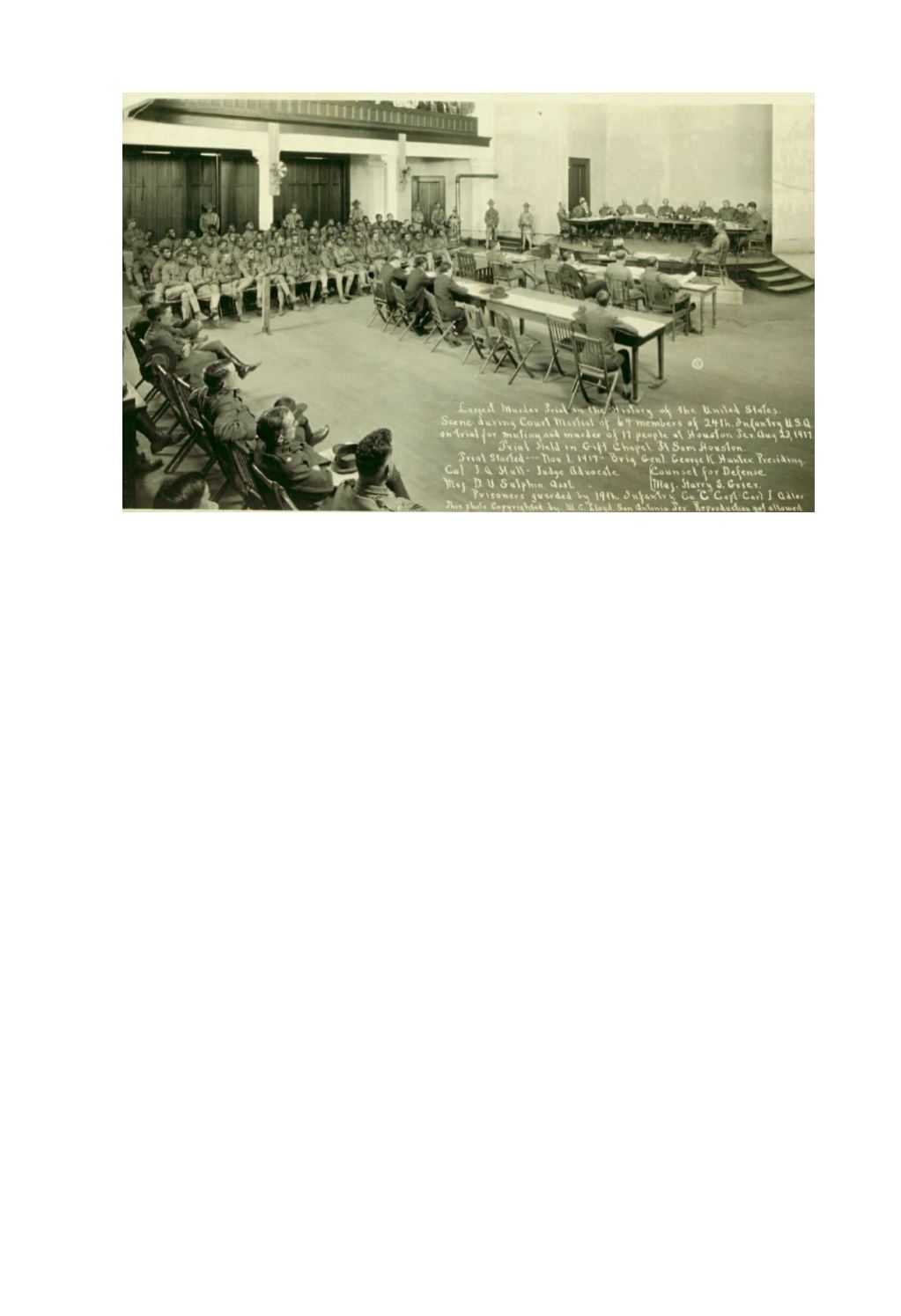

377
377
●
(MILITARY—WORLD WAR ONE.) PHOTOGRAPHY.
“The Houston
Riot of 1917 or Camp Logan Riot.”
Photograph, 9 x 14 inches, with margins; some
slight creasing but not affecting the image. A detailed explanation of the court scene, writ-
ten in white in the negative in the lower right corner.
San Antonio, TX, 1917
[3,000/4,000]
ONE OF ONLY THREE KNOWN COPIES OF THIS PHOTOGRAPH OF THE TRIAL OF THE
24
TH
INFANTRY SOLDIERS
,
ACCUSED OF MUTINY AND MURDER
.
On August 23rd, 1917, two
Houston Texas police officers, who later claimed to be looking for someone, stormed the home of a
black woman, dragging her into the street, half naked. Alonso Edwards, a black soldier from the 24th
Infantry saw the incident and confronted the policemen, asking what had happened. He was set upon
and beaten, and arrested. Later that day, Corporal Charles Baltimore entered the Houston Police
headquarters to investigate the beatings of both the woman and the soldier. After an argument, he too
was beaten and then shot at as he left the station. That evening, a large group of soldiers from Camp
Logan stole weapons from the camp depot, and marched to the city of Houston. They were met by an
armed group of both civilians and police. No one knows who fired first, but a bloody race riot claimed
the lives of 20 people: four soldiers, four police and twelve citizens. Order was restored and the Third
Battalion was returned by rail to New Mexico.
The trial, shown in this photograph, took twenty-two days, and involved two hundred witnesses.
Nineteen black soldiers were hung, and forty-one given life sentences. Defense attorneys were less than
aggressive in trying to show that witnesses were hardly able to distinguish one black man from
another, at night and in the rain. The trials were hurried and kept out of the news as much as possible
because tens of thousands of blacks were still overseas fighting for the country that was hanging them
at home.
378
●
(MILITARY—WORLD WAR ONE.)
The Colored Man is No Slacker.
Chromolithographic poster, 15
3
/
4
x 19
3
/
4
inches.
Chicago: Renesch Company, 1918
[350/500]
World War I uplift poster for the folks back home. The Renesch Company had a large catalogue of
uplift posters aimed at the African American community. These were often bought by families with
sons or fathers in service.









